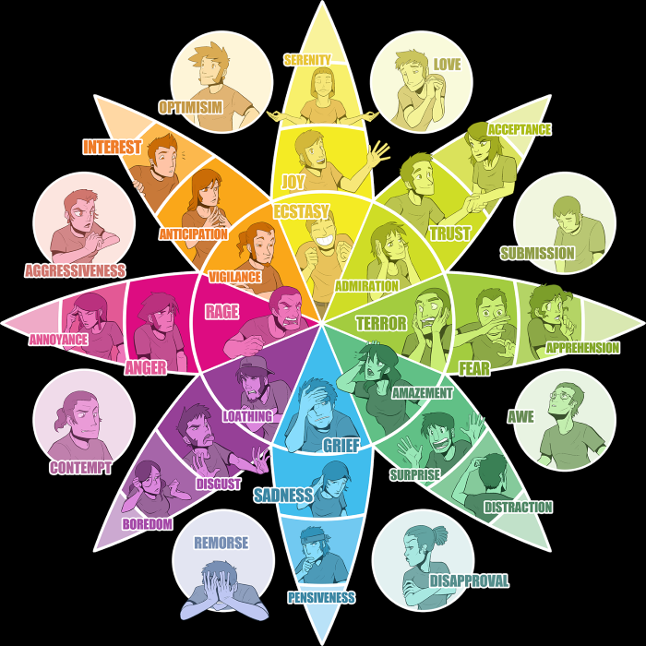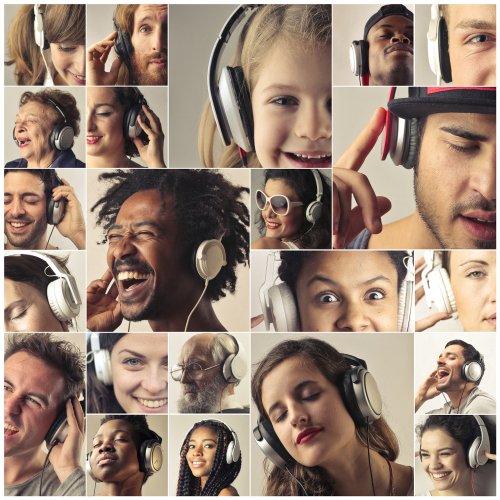Write More Non-Romantic Love Songs
March 24, 2023
There are far, far fewer non-romantic love songs than there are songs about romance.

In February of 2021, the Daily Illini wrote an article titled, Why Are So Many Songs About Love?
The article states that a recent psychology of music study revealed that in every decade over the past six decades (since 1960), as much as 67% of all song lyrics were about romantic love. These included themes of longing, heartbreak, and sex.
In fact, non-romantic love songs fell well behind other popular themes as well like partying, depression, loss, and money.
At Syncsongwriter.com we offer our students plenty of tips on how to write songs for music sync licensing. In this post we want to offer even more tips on why you should consider writing non-romantic love songs.
Film & TV
In film and TV sync licensing, non-romantic songs are always high in demand. Almost every music supervisor we talk to tells us they have a hard time finding relationship songs that are not based on romance.
Advertising

The same is true for advertising. Advertising rarely uses songs about romance. But because non-romantic songs about friendships, family, and selfless love for others can be powerful and universal, brands and advertising agencies love them…and desperately need them!
Non-Romantic Relationships
There’s a high demand for non-romantic love songs that explore themes other than romance in relationships. Non-romantic relationships can refer to any type of relationship that is not focused on romantic love including:
- Friendships
- Family
- Professional relationships (colleagues & mentors)
- As well as themes related to identity and self-discovery




Non-romantic relationships are an important aspect of life and can be a source of support, guidance, and connection.
Family Relationships

One of the more common relationship themes in non-romantic love songs is family. Songs about family can explore the bond between parents and children, siblings, and extended family members.
These songs can address the challenges and joys of family life, as well as the complex emotions that can arise within family relationships like love, support, understanding, and loyalty within the family unit.
Examples of non-romantic songs about family include “Home” by Phillip Phillips, a song about the feelings of belonging and connection that come with being part of a family.
There’s also:
- The House that Built Me by Miranda Lambert
- Mother by Pink Floyd
- Dance with My Father by Luther Vandross
- Daughter by Loudon Wainwright III
- The Way You Love Me by Keri Hilson
Friendship Songs

Another relationship theme in non-romantic songs is friendship. Songs about friendship can highlight the value of close relationships and the unique bond that exists between friends.
You can find plenty of non-sexual Bromance and womance songs on Spotify.
These songs can explore the challenges and joys of friendship, as well as the ways in which friends support and uplift each other.
Self-Discovery Songs
The indie music scene is ripe with songs about growth, empowerment, and self-discovery. Check out the Confidence Boost playlist on Spotify for songs about identity and self-discovery.
Songs that Convey Emotions & Authenticity
Authenticity is what music supervisors are looking for when they are trying to find songs for film and TV sync placements. They want songs that are written from the heart…songs that convey real emotions.
They also look for non-romantic love songs that have universal appeal and can reach a wider audience.
Advertisers and marketers understand this as well. They use universal themes and emotional psychological triggers in their marketing efforts because they know that it is emotions and not logic that drives our decisions.
In fact, Harvard Business School professor and author Gerald Zaltman discovered that 95% of cognition occurs in our emotional subconscious brain and not in our conscious brain.
When your song makes an emotional connection it:
- Is memorable
- Creates loyalty
- Inspires the right action…they want to hear more
To help with your emotional song writing, check out this unique graphic illustration by CopyPress of Robert Pluchik’s Wheel of Emotions.

It explores other emotions related to these 8 primary emotions:
- Joy
- Trust
- Fear
- Surprise
- Sadness
- Disgust
- Anger
- Anticipation
Universal Appeal
Connecting with the Listener
Part of the universal appeal of non-romantic love songs is their ability to connect with the listener on a deep emotional level.
A song that can evoke emotions such as happiness, sadness, admiration, or nostalgia has a greater chance of resonating with people from all backgrounds.
For example, a song about remembering the fun times of your childhood will connect with virtually anyone who is feeling nostalgic. A song about the glorious days of summer will also connect with anyone that has experienced a similar situation.
When your non-romantic love song creates an emotional bond, however fleeting or brief, it can be powerful; powerful enough to instantly create a higher level of trust, which will help to attract and retain their attention longer.
Telling A Story

Another factor that contributes to a song’s universal appeal is its ability to tell a story.
A song that tells a story that is relatable and easy to understand will have a greater chance of connecting with more people regardless of their age, ethnicity, etc.
For example, a song about overcoming obstacles and achieving success is relatable to almost anyone, while a song about the struggles of growing up is a universal theme that no one seems to tire of.
A non-romantic song that tells a powerful story will draw people in and resonate with a much wider audience.
Simple Language
A key element of a universal lyric is the use of simple language. Lyrics that are easy to understand and that use common words and phrases are more likely to be understood and appreciated by a wide range of listeners.
This doesn’t mean that the lyrics should be simplistic, but rather that they should be accessible to a broad audience.
A song that uses complex vocabulary or obscure references may be appreciated by a small group of listeners, but it is unlikely to have universal appeal.
Use of Imagery
In addition to relatable themes and simple language, universal lyrics also often include powerful imagery. This means that it should be able to paint a vivid picture in the listener’s mind, whether it’s with descriptive words or metaphors.
Open to Interpretation by All Generations

Another thing that contributes to the universal appeal of a non-romantic love song is its ability to be interpreted in different ways by people from multiple generations and backgrounds.
For example, a song about a broken non-romantic relationship can be interpreted as a song about heartbreak or as a song about the end of a friendship. A song that was popular in the 1960s can still be enjoyed by people today.
The Beatle’s most popular song, Hey Jude, is Billboard’s most played song ever. It’s a non-romantic song about making the best of a sad situation and taking a positive outlook.
Common Themes in Non-romantic Love Songs
Songs about non-romantic relationships usually address very common themes such as joy, loss, identity, and growth
Theme of Loss
Songs about non-romantic relationships will sometimes address the theme of loss. This can include the loss of a family member or friend due to death, distance, or other circumstances.
Songs about loss can explore the grief and emotions that come with losing a loved one, as well as the ways in which people cope with and heal from loss.
Examples of songs about loss include The Scientist by Coldplay, I Will Always Love You by Whitney Houston, and All I Could Do Was Cry by Etta James.
Theme of Identity
Identity and self-discovery are also common themes in non-romantic love songs. These songs may explore themes of self-acceptance, personal growth, and finding one’s place in the world.
I Am the Walrus by The Beatles is a song that explores themes of identity and self-expression, with lyrics that ask, Who are you? and Who I want to be.
I Will Survive by Gloria Gaynor is a song about overcoming adversity and finding strength within oneself. Other songs about identity and self-discovery include Born This Way by Lady Gaga and Stronger by Kelly Clarkson.
Theme of Growth
Songs about non-romantic relationships can also explore the theme of growth. This can include the ways in which people learn and grow through their relationships with others, as well as the ways in which relationships change and evolve over time.
Songs about growth can offer insight and reflection on the journey of life and the ways in which people support and inspire each other.
Examples of songs about growth include The Climb by Miley Cyrus, Stronger by Kelly Clarkson, and Roar by Katy Perry, which is a song that celebrates the power of perseverance and self-belief.
Conclusion
Non-romantic love songs about relationships offer a rich and diverse range of themes and insights that are in high demand in Film, TV, and Advertising. They can evoke strong emotions, tell a story, be interpreted in different ways, and be enjoyed by many different generations. These types of songs use relatable themes, simple language, and powerful imagery and can explore the complexities and nuances of family, friendship, loss, and growth, offering insight and reflection on the value and importance of these types of relationships in our lives.
Check out our older post for additional tips on writing songs for sync.
About Sync Songwriter
Sync Songwriter was created by JUNO award-winning music producer Chris SD.
Our objective is to help indie artists and songwriters understand how the sync licensing world operates.
We teach them how to properly prepare their music for film and TV, plus how to find music licensing opportunities, and how to meet and create professional relationships with music supervisors.
Let us show you how to get into that top 1% of artists and musicians that music supervisors want to hear from.
Practically every type of song is needed for sync-placement, whether you write non-romantic loves, songs about heartbreak or newfound love, or songs in any style or genre…there are opportunities just waiting for your music.
To learn more, please contact us.
List of Popular Non-Romantic Love Songs
As an indie artist, you can also legally release cover songs, which are often high in demand by music supervisors who can’t afford a popular song due to smaller budgets. Here are some of the most popular non-romantic songs ever, including how many times these songs have been covered by other artists:
- Stand By Me – (Ben E King & 400 covers)
- With a Little Help from My Friends – (The Beatles & 50 covers)
- Lean On Me – (Bill Withers & 167 covers)
- You’ve Got a Friend – (Carole King & 426 covers)
- My Best Friend – (Queen & 57 covers)
- Count On Me – (Bruno Mars & 17 covers)
- I’ll Be There – (Jackson 5 & 139 covers)
- I’ll Stand By You – (Pretenders & 64 covers)
- The Rose – (Bette Midler & 236 covers)
- You’ve Got a Friend in Me – (Randy Newman & 96 covers)
- Songbird – (Fleetwood Mac & 94 covers)
- Best Day of My Life – (American Authors & 22 covers)
- Get Off of My Cloud – (Rolling Stones & 60 covers)
- Dance With My Father – (Luther Vandross & 27 covers)
- We Are Family – (Sister Sledge & 43 covers)
- Sunshine On My Shoulders – (John Denver & 75 covers)
- We’re Going to Be Friends – (White Stripes & 18 covers)
- Yellow Submarine – (Beatles & 220 covers)
- Lookin Out My Back Door – (Creedence Clearwater Revival & 59 covers)
- Stray Cat Strut – (Stray Cats & 22 covers)
- Poprocks & Coke – (Green Day & 5 covers)
- Cool – (Gwen Stefani & 7 covers)
- Brown Skinned Girl – (Beyonce)
Hey! Give us a shout about anything really.
contact Sync Songwriter
Our goal is for you to start getting your music into TV & film.
Comments
Share to: